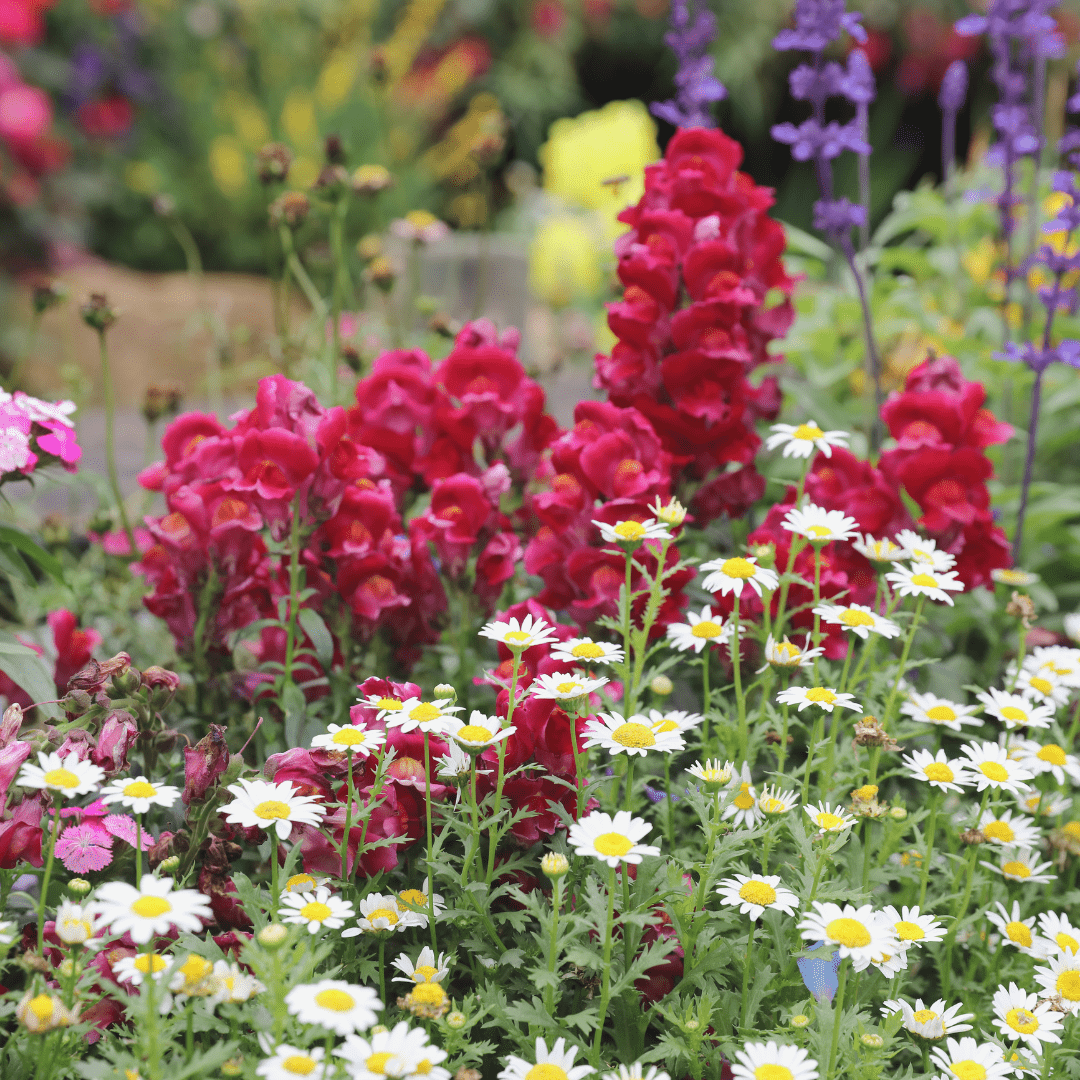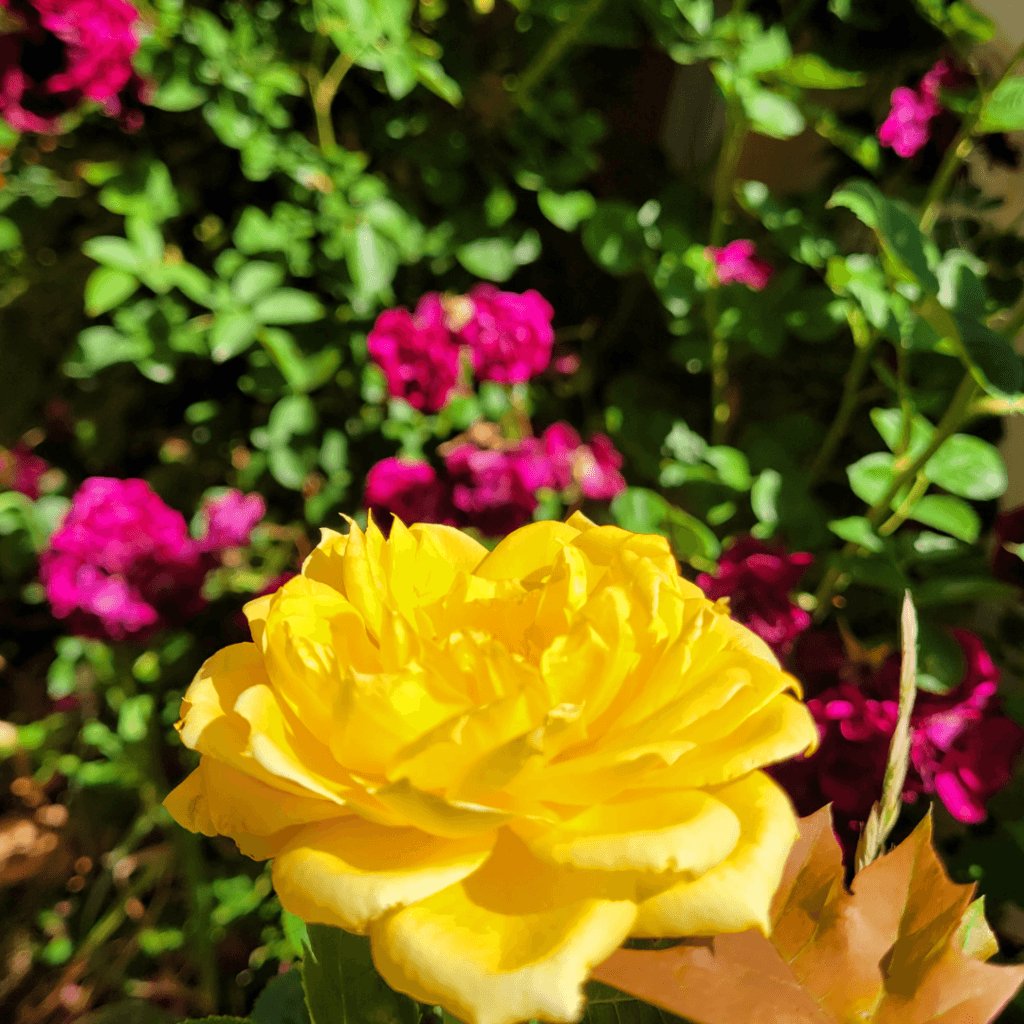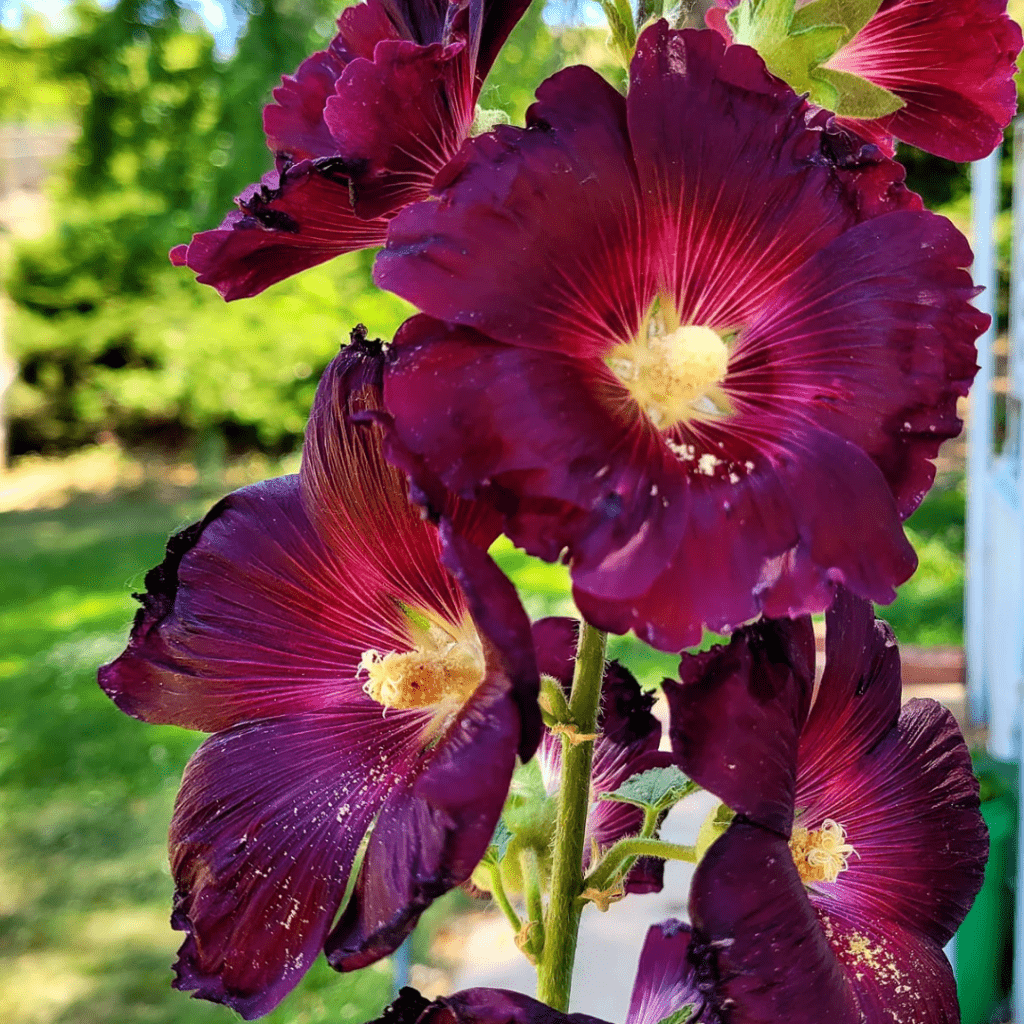Perennial flowers.
Perennial flowers are a popular choice for gardeners looking to create a low-maintenance garden that blooms year after year. These enduring plants offer a range of benefits, from sustainability to reduced planting needs, making them ideal for those seeking beauty without constant upkeep. In this article, I will explore the best perennial flowers for low-maintenance gardens, offering guidance on selection, care, and design to help you create a vibrant and sustainable outdoor space that thrives with minimal effort.
This is a pinnable post. Tap or hover over any image in this post to pin to your Pinterest Boards.
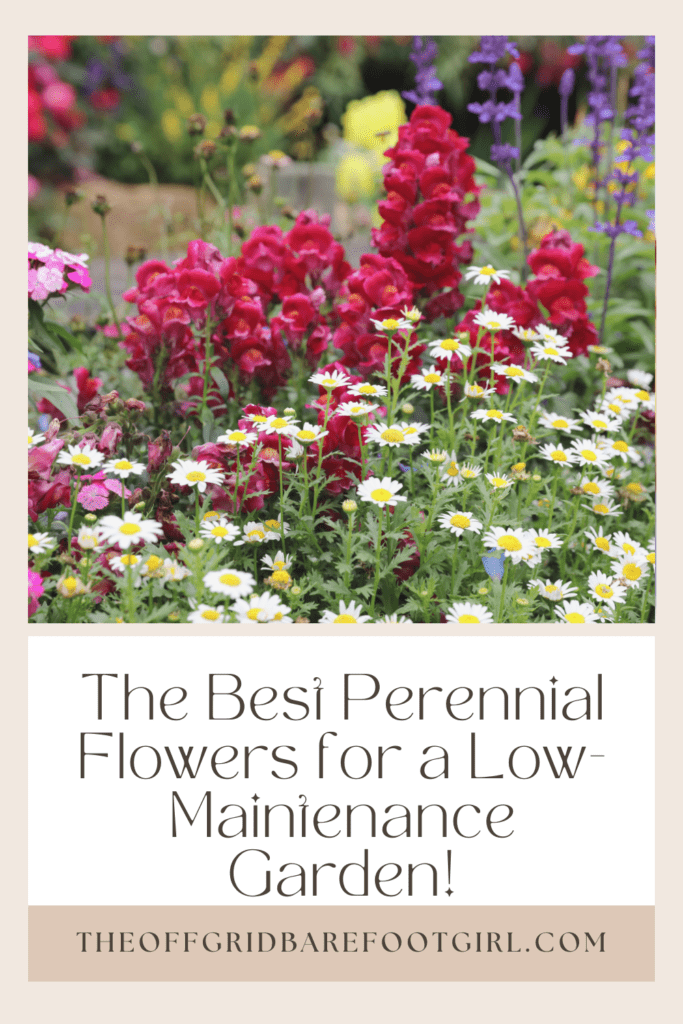
Introduction to Perennial Flowers
Perennial flowers are the loyal friends of the gardening world, coming back year after year like a reliable sitcom on TV. These are the plants that you can count on, unlike that fickle annual that ditches you after one season.
Defining Perennial Flowers
In simple terms, perennial flowers are the MVPs of your garden that keep coming back without you having to lift a finger (well, maybe just a little watering and pruning). They are the gift that keeps on giving, bringing color and life to your yard season after season.
My Growing Experience!
I have been growing flowers for almost 6 years now of all sorts of styles and colors. I love growing flowers in my garden and having varieties that bloom at different parts of the year provides my garden life throughout each season. Since I love sharing my flowers for others to enjoy, I love it when it comes time to separate them when they become too crowded, which often they do!
Advantages of Perennial Flowers
These perpetual plants are like the sustainable option of the plant world. They require less maintenance and effort compared to annuals, saving you time and money in the long run. Plus, they often have deeper root systems, making them more drought-tolerant and sturdy in the face of unpredictable weather.
Perennial flowers offer a range of advantages, making them popular choices for gardeners.
Here are some of the key advantages:
- Longevity: Perennial flowers are plants that live for more than two years, often coming back year after year. Once established, they provide long-lasting beauty in the garden, reducing the need for replanting.
- Cost-Effectiveness: While these perpetual plants may have a higher initial cost compared to annuals, their ability to return year after year ultimately makes them more cost-effective in the long run. This can save gardeners money on purchasing new plants each year.
- Low Maintenance: Many perennial flowers require minimal maintenance once established. Once they have settled into the garden, they typically require less watering, fertilizing, and pruning compared to annuals, saving time and effort for the gardener.
- Diverse Options: Perennial flowers come in a wide variety of colors, shapes, sizes, and bloom times. This diversity allows gardeners to create vibrant and dynamic landscapes that offer visual interest throughout the growing season.
- Erosion Control: Perennial flowers often have extensive root systems that help stabilize soil, making them excellent choices for erosion control in gardens, landscapes, and even on slopes.
- Habitat for Wildlife: Many perennial flowers attract pollinators such as bees, butterflies, and hummingbirds with their nectar-rich blooms. By planting perennials, gardeners can create habitats that support biodiversity and contribute to the health of local ecosystems.
- Seasonal Interest: Perennial flowers can provide interest in the garden throughout the seasons, with some varieties offering attractive foliage or seed heads even after their blooms have faded. This ensures that the garden remains visually appealing year-round.
- Adaptability: Perennial flowers are often well-adapted to local climates and soil conditions, making them easier to grow successfully compared to some annuals or fascinating plants. Once established, they can tolerate a range of environmental conditions, including drought and temperature fluctuations.
- Increased Property Value: A well-maintained garden with these perpetual plants can enhance the curb appeal and value of a property. Beautiful, colorful gardens can make a significant difference in the overall aesthetic appeal of a home or landscape.
Benefits of Perennial Flowers in a Low-Maintenance Garden
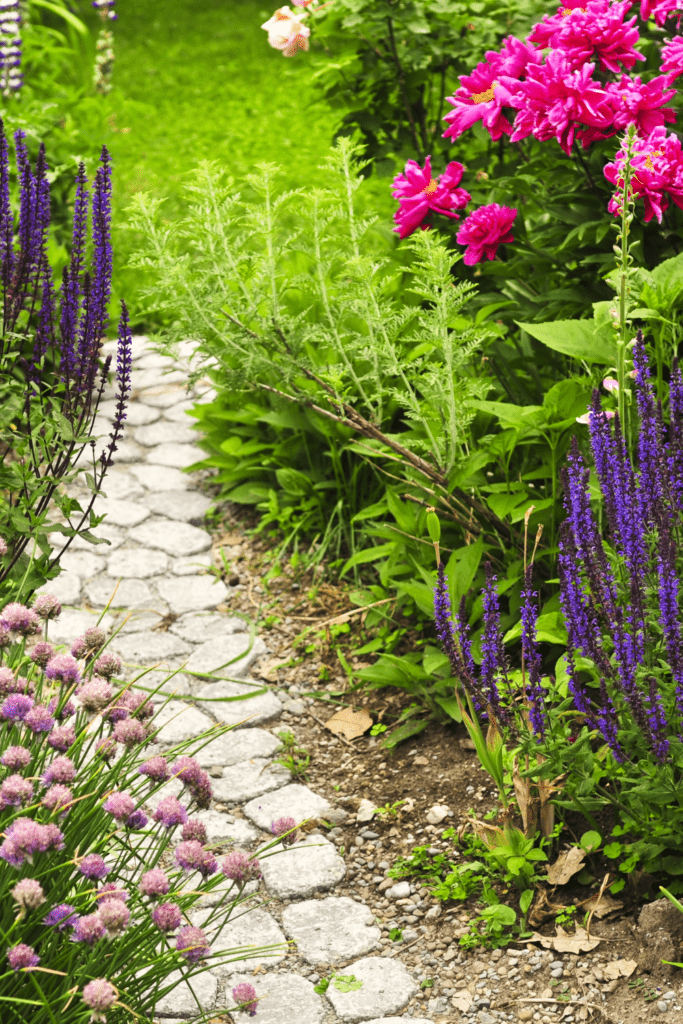
Longevity and Sustainability
Perennial flowers are the gift that keeps on giving, like the energizer bunny of the plant world. Once planted, they keep coming back year after year, saving you from the annual hassle of replanting.
The longevity and sustainability of these perpetual plants are key aspects that contribute to their popularity and importance in gardening and landscaping. Here’s a deeper look into these aspects:
Longevity
- Long Life Span: Perennial flowers are known for their longevity, often living for multiple years or even decades under the right conditions. Unlike annuals, which complete their life cycle in one growing season, perennials have the ability to regrow from the same root system year after year. This longevity reduces the need for frequent replanting, saving time, effort, and resources for gardeners.
- Division and Propagation: Some perennial flowers benefit from periodic division or propagation, which involves splitting clumps of plants and replanting them to rejuvenate growth, improve vigor, and extend their lifespan.
- Climate: These perpetual plants may have different tolerances to climate conditions, such as temperature extremes, frost, and humidity. Choosing perennial varieties that are well-adapted to the local climate can enhance their longevity.
- Growing Conditions: Providing the right growing conditions, including appropriate sunlight, soil type, moisture levels, and drainage, can help these perpetual plants thrive and extend their lifespan.
- Species Selection: Different perennial flower species have varying lifespans. Some may be short-lived perennials, while others are long-lived and can persist for many years or even decades.
Sustainability
- Water Efficiency: Once established, many perennial flowers have deep root systems that enable them to access moisture from deeper soil layers, reducing the need for frequent watering. This water efficiency contributes to sustainable gardening practices, especially in regions prone to drought or water scarcity.
- Soil Health: Perennial flowers play a crucial role in maintaining soil health and fertility. Their extensive root systems help prevent soil erosion, improve soil structure, and enhance nutrient cycling. By minimizing soil disturbance and promoting soil stability, perennials contribute to the overall sustainability of ecosystems.
- Reduced Chemical Inputs: These perpetual plants often require fewer chemical inputs such as fertilizers and pesticides compared to annuals. Once established, they can thrive with minimal intervention, reducing the environmental impact of gardening practices and promoting biodiversity by minimizing the use of harmful chemicals.
- Habitat and Biodiversity: Perennial flowers provide valuable habitat and food sources for pollinators, beneficial insects, and other wildlife. By supporting diverse plant and animal species, perennial gardens contribute to ecological balance and biodiversity conservation, which are essential components of sustainable landscapes.
- Carbon Sequestration: Like all plants, perennial flowers absorb carbon dioxide from the atmosphere during photosynthesis, helping mitigate climate change by sequestering carbon in their biomass and in the soil. Perennial plants, with their long lifespan and extensive root systems, can store significant amounts of carbon over time, making them important allies in efforts to combat climate change.
The longevity and sustainability of these perpetual plants make them integral components of eco-friendly gardening and landscaping practices. By promoting soil health, water efficiency, biodiversity, and carbon sequestration, perennial flowers contribute to the creation of resilient and sustainable landscapes that benefit both people and the environment.
Reduced Need for Planting Each Year
Bid farewell to the yearly ritual of planting new flowers each spring. With perennials, you can sit back and relax knowing that your garden will bloom again without you breaking a sweat!
Factors to Consider When Choosing Perennial Flowers
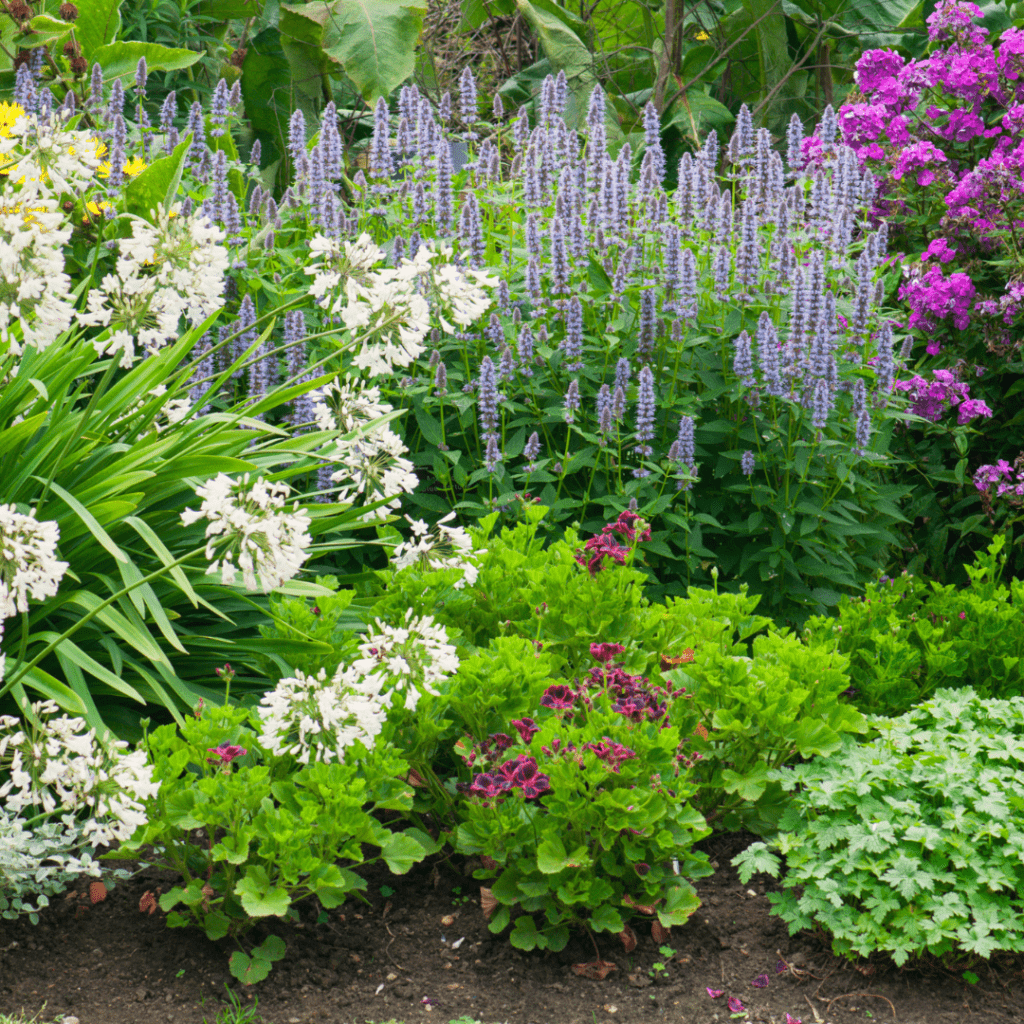
Climate and Hardiness Zones
Before diving into the world of these perpetual plants, make sure to check your hardiness zone to ensure the plants you choose can survive the winter in your area. You wouldn’t want to unintentionally turn your garden into a botanical graveyard, right?
Sunlight and Soil Requirements
Plants, like humans, have their preferences. Some like to bask in the sun all day while others prefer a bit of shade. Make sure to match your perennial flowers with the right amount of sunlight and soil conditions to keep them happy and thriving.
Colors and Bloom Times
Who doesn’t love a pop of color in the garden? When selecting these perpetual plants, consider the bloom times and colors to ensure a continuous display of beauty throughout the seasons.
Top 5 Perennial Flowers for Low-Maintenance Gardens
1. Lavender
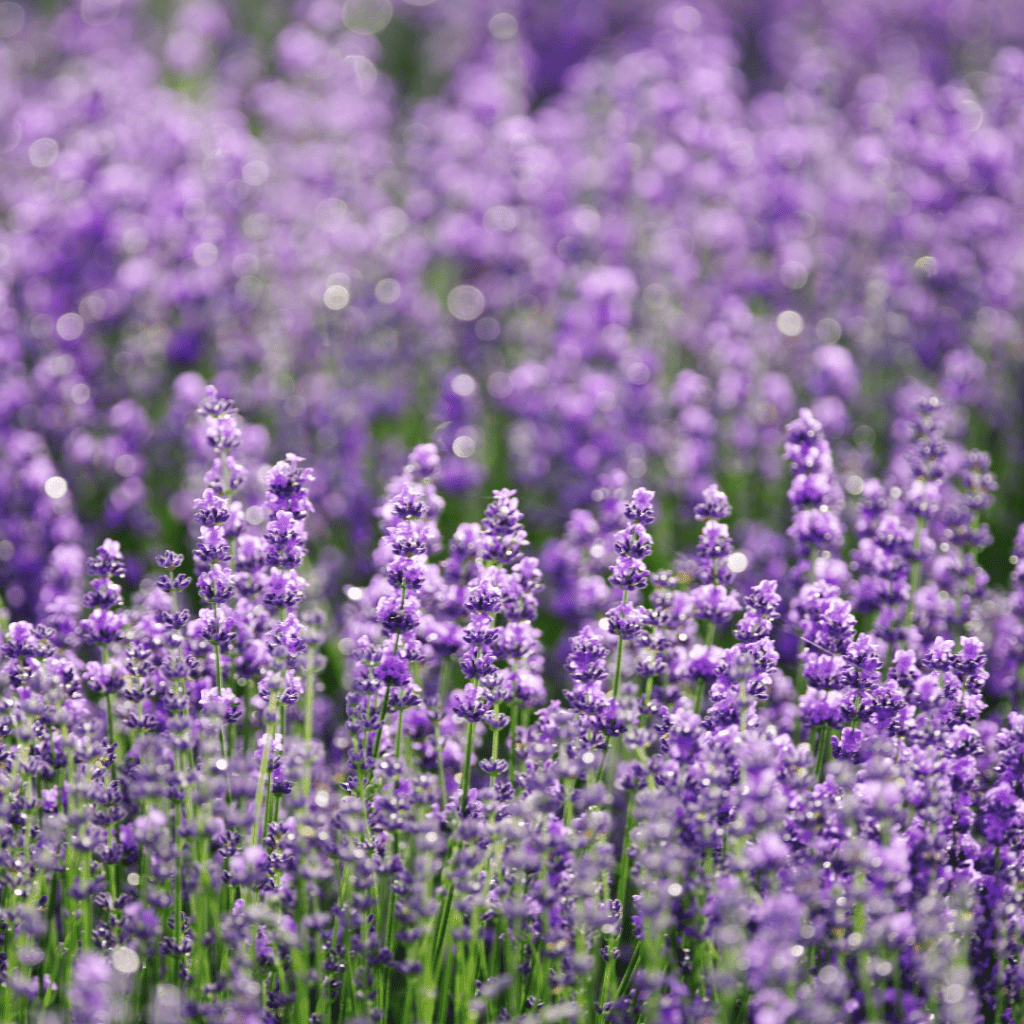
This fragrant beauty not only adds a touch of purple paradise to your garden, but also attracts bees and butterflies like a floral magnet. Plus, its calming scent can turn your garden into a zen retreat! I have three phenomenal lavender plants in my backyard orchard and I love them all!
2. Black-Eyed Susans
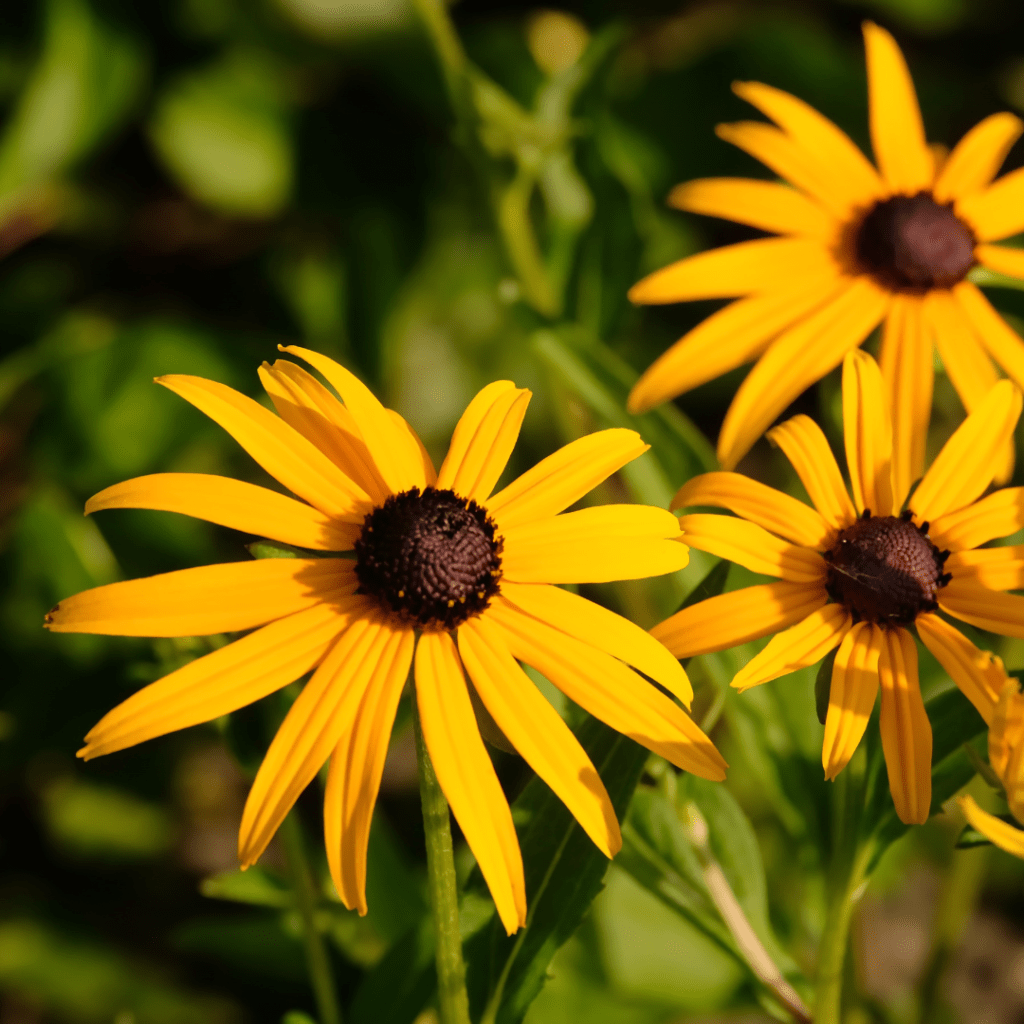
Like a ray of sunshine in flower form, Black-Eyed Susans add a burst of yellow to your garden while being tough as nails. They can handle various soil conditions and drought, making them the ultimate low-maintenance choice.
3. Daylilies
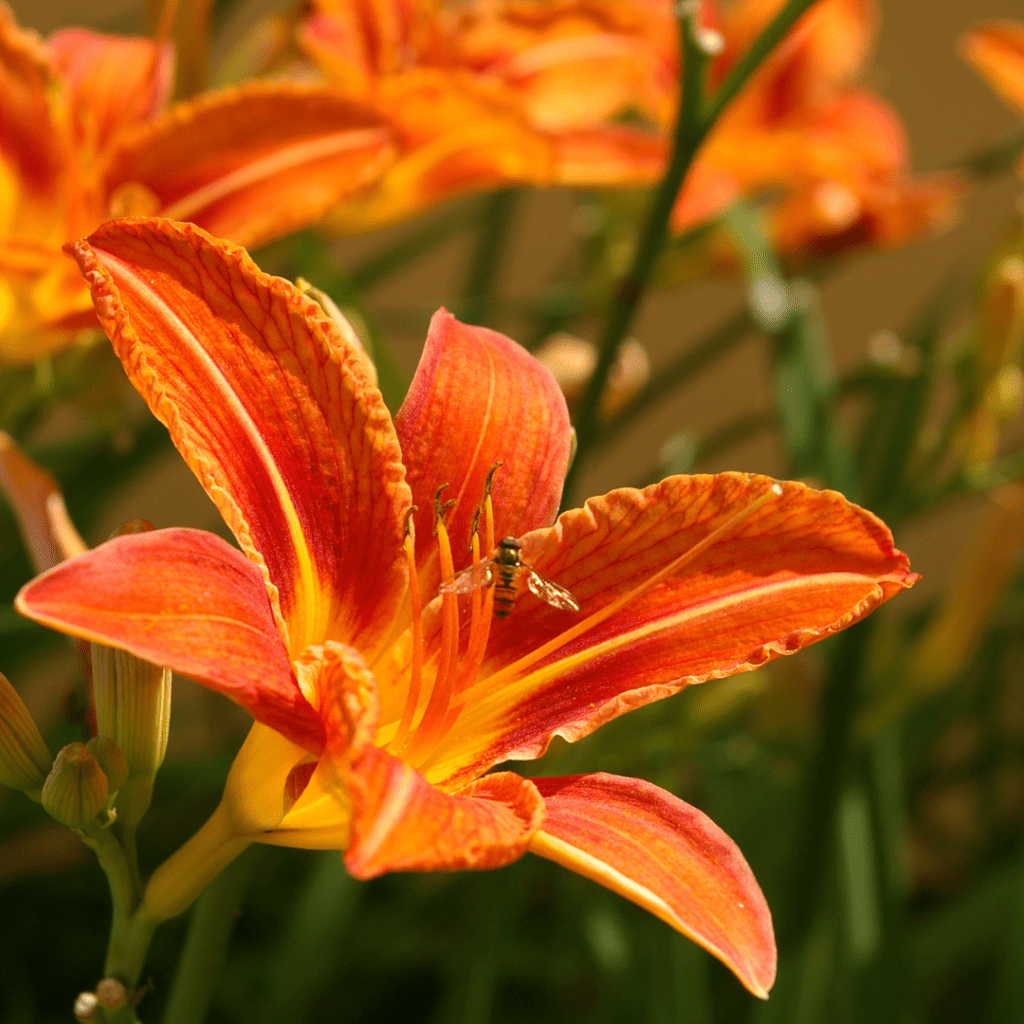
Don’t let the name fool you; these beauties bloom for more than just a day. Daylilies come in a variety of colors and shapes, brightening up your garden with minimal effort on your part.
4. Salvia
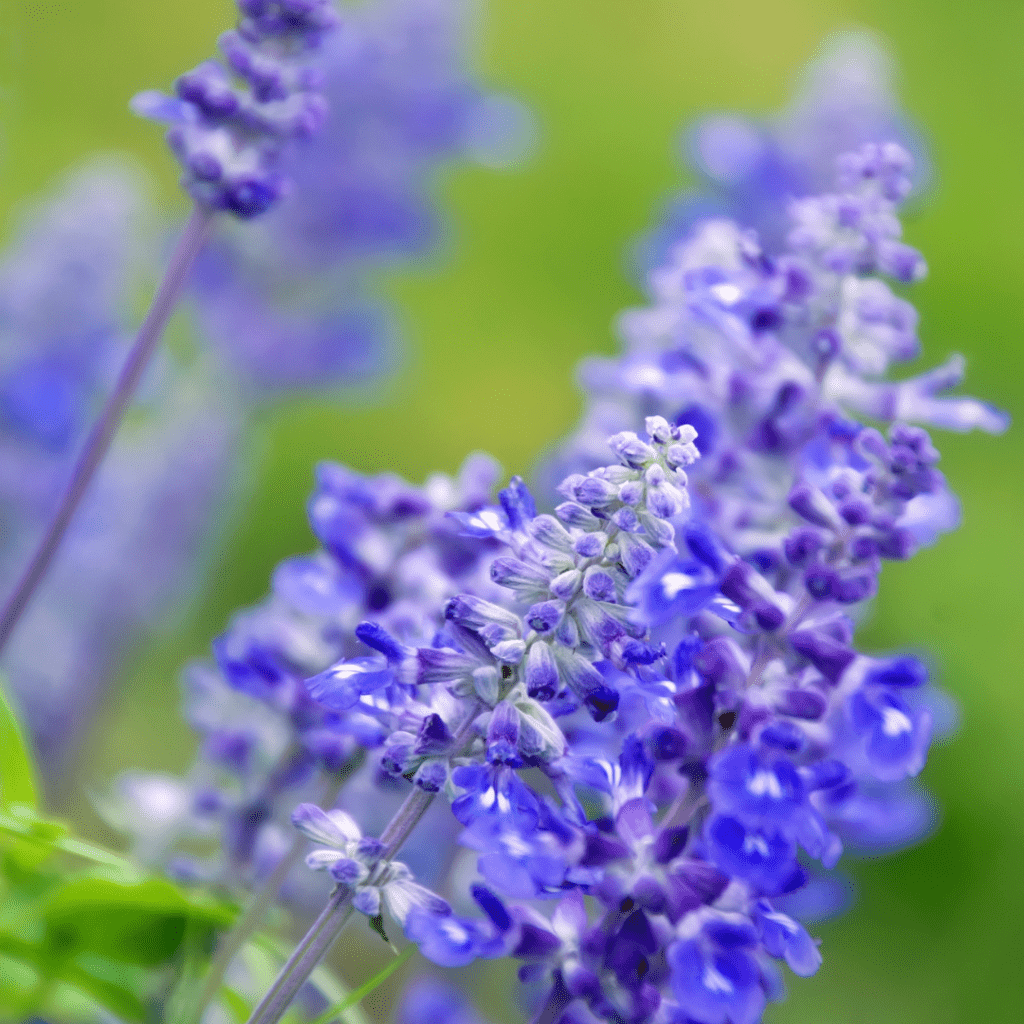
With its striking spiky blooms, Salvia is a favorite among pollinators and hummingbirds. This tough plant can handle heat and drought like a champ, making it a perfect choice for low-maintenance gardens.
5. Coreopsis
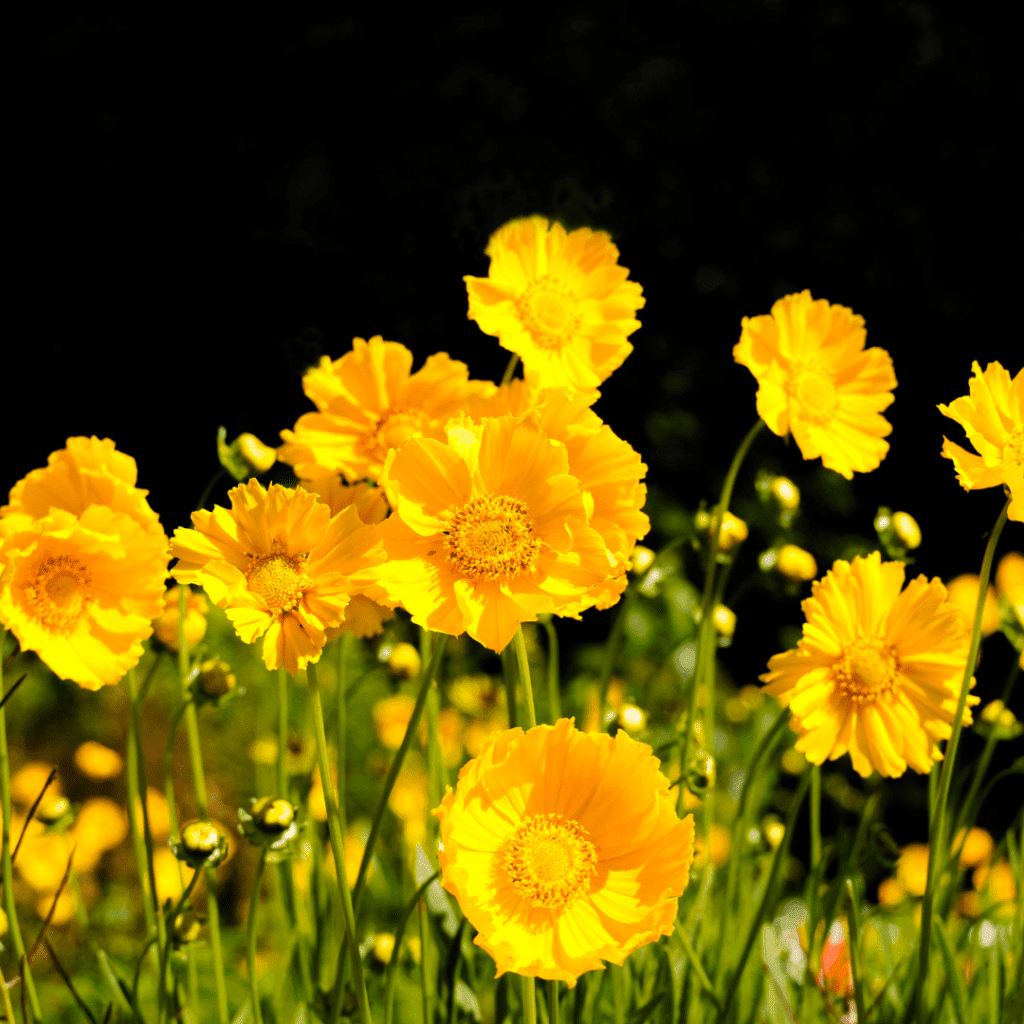
Known for its cheerful yellow flowers, Coreopsis is like the sun on a cloudy day in your garden. It thrives in sunny spots and requires little care, giving you a burst of color without the hassle.
Tips for Caring for Perennial Flowers
Perennial flowers are the gift that keeps on giving in your garden. These beauties come back year after year with minimal effort on your part. But hey, they still need a little TLC to thrive.
Watering and Drainage
These plants like a little drink, but don’t drown them like you’re reenacting the Titanic. Make sure your soil has good drainage so they don’t end up with soggy feet. A little sip when they’re feeling parched is all they need!
Pruning and Deadheading
Think of deadheading as giving your plants a spa day. Snip off those faded flowers to encourage new blooms and keep things looking fresh. And while you’re at it, give them a little trim here and there to keep their shape in check.
Fertilizing and Mulching
Just like how we need our morning coffee, these perpetual plants need their pick-me-up too. A little sprinkle of fertilizer now and then will keep them happy and blooming. And don’t forget to tuck them in with a cozy mulch blanket to keep the weeds at bay.
Design Ideas for Incorporating Perennial Flowers in Your Garden
Now, let’s get fancy and talk about how to make your garden look like it belongs in a magazine. With these design tips, your garden will be the envy of the neighborhood (in a good way).
Creating Colorful Borders
Who needs a boring old fence when you can have a riot of colors lining your garden beds? Mix and match different hues to create a vibrant border that looks like a watercolor painting come to life.
Planting in Clusters for Impact
Forget about being shy and retiring – perennial flowers love to show off in big, bold clusters. Plant them in groups to create a jaw-dropping display that will make your garden the talk of the town.
Combining Different Heights and Textures
Variety is the spice of life, and the same goes for your garden. Mix things up by combining plants of different heights and textures for a visually arresting scene. It’s like a botanical fashion show right in your backyard!
Conclusion
By incorporating the best perennial flowers into your low-maintenance garden and following the tips provided for care and design, you can enjoy a beautiful and thriving outdoor space with minimal effort. The longevity, sustainability, and colorful blooms of perennial flowers make them a smart and rewarding choice for any gardener looking to enhance their landscape. Embrace the beauty and ease of perennial flowers to create a garden that brings joy season after season.
Resources: Here are some more resources for you to check out!
- 30 Best Perennial Flowers That Bloom Every Year – By Good Housekeepings
- 27 Most Popular Perennial Flowers and Plants for Your Garden – By Real Simple
- The Best Perennial Flowers for Any Garden – By Prevention
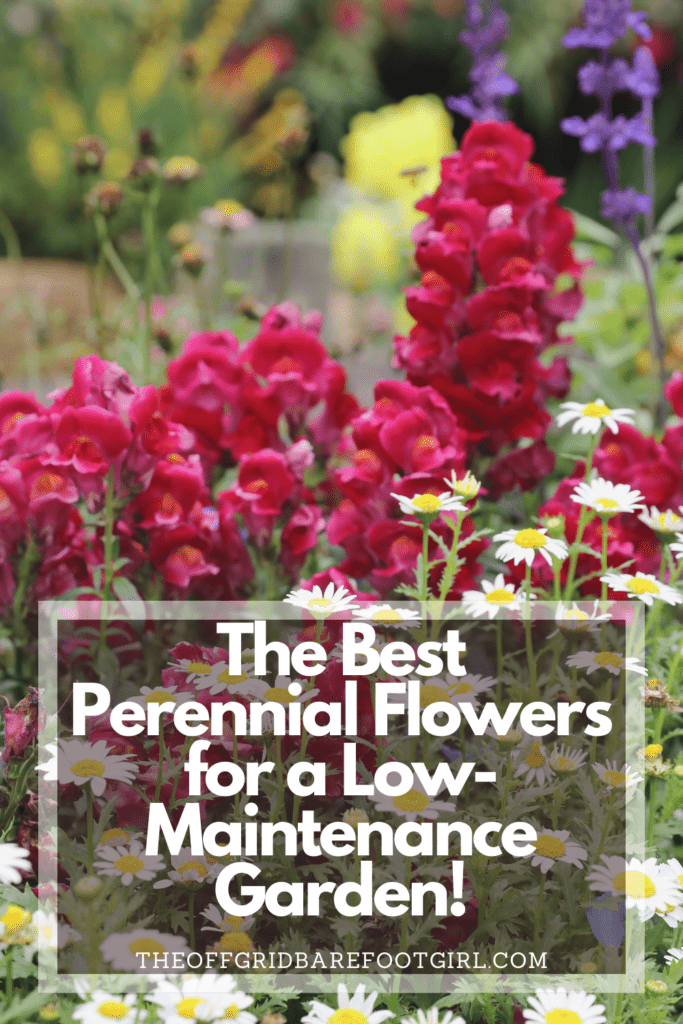
Frequently Asked Questions
1. Are perennial flowers difficult to maintain?
Perennial flowers are known for their low-maintenance nature, making them a popular choice for gardeners of all levels. With proper care and attention to their specific needs, perennial flowers can thrive with minimal effort.
2. Do perennial flowers bloom all year round?
While perennial flowers do return year after year, they typically have specific bloom times based on their variety and climate. By selecting a mix of perennial flowers with staggered bloom times, you can enjoy continuous blooms throughout the growing season.
3. How do I design a garden using perennial flowers?
When designing a garden with perennial flowers, consider factors like color, height, and bloom time to create a visually appealing and dynamic landscape. Mixing different varieties, incorporating borders, and grouping plants with similar care needs can help create a cohesive and vibrant garden space.
Summary
I hope I have inspired you to grow perennial flowers in your garden with these tips and products.
If you were encouraged by this post, I invite you to check out my FREE Printables Page for fun free printables, planners, and charts.
ENTER MY FREE Printables Page HERE
Here are some more of my gardening inspiration posts to check out!
How to Design a Cottage Garden: Growing a Beautiful Mess
Roses: How to Grow and Care for Roses
Hollyhocks: How to Grow and Care for Hollyhocks
Tulips: How to Grow and Care for Tulips
PeeGee Hydrangea Trees: How to Grow and Care for a PeeGee Hydrangea Tree
Bearded Irises: How to Grow and Care for Bearded Irises
Blessings,
The Off Grid Barefoot Girl

